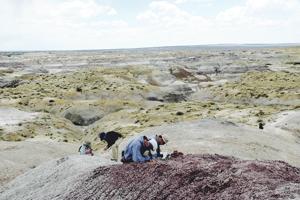Scholars are reexamining long-held beliefs about Vikings and Norse mythology, revealing that many of our perceptions are based on interpretations from later medieval sources. According to researchers at the University of Münster’s Cluster of Excellence “Religion and Politics,” the narratives surrounding Vikings have been shaped over centuries by writers, artists, and politicians, often reflecting contemporary worldviews rather than historical facts.
The Viking Age, typically defined as spanning from the 8th to the 11th century, is often viewed through the lens of popular culture. Roland Scheel, a scholar at the Cluster, notes that the images of fearless adventurers and powerful warriors are largely influenced by modern films, video games, and museum presentations. These portrayals rarely align with the historical record, which is sparse and often consists of texts written by Christian scholars over a century later, alongside brief runic inscriptions.
Many of the most recognized narratives of Norse paganism are what Scheel describes as “memorialized history.” This means that surviving texts reflect a constructed past rather than a direct account. The term “Viking” has taken on predominantly positive connotations, attributing to pre-Christian Scandinavian society a special warrior culture and a relatively favorable position for women. This idealized view continues to hold sway today, influencing both cultural identity and modern neo-pagan movements.
Simon Hauke, another scholar from the Cluster, points out that these contemporary interpretations often neglect the violence associated with Viking raids. The perception of Vikings is markedly more sympathetic than that of other medieval events such as the Crusades, which are frequently associated with coercion and brutality. Scheel explains that ideas about Vikings permeate various aspects of society, from pop culture to politically motivated initiatives such as the Council of Europe’s Viking Cultural Route, intended to promote a shared European identity.
Reinterpreting Norse Mythology
The research conducted by Scheel and Hauke seeks to uncover how medieval interpretations of Norse paganism have evolved over time. They examine how various authors and cultural movements have reshaped concepts of the pagan North, drawing on influential texts from the 13th-century “Edda,” written by Snorri Sturluson, to the references made by historical figures like Otto von Bismarck in the 19th century.
Scheel asserts that understanding how people imagined Scandinavian paganism in their respective eras reveals much about their societal goals and mindsets. “Our research allows us to peek behind the scenes of our own knowledge—or what we think we know,” he explains. The use of Norse mythology for political purposes is evident throughout history, particularly in the exploitation of these narratives by the Volk movement and the National Socialists, who misappropriated medieval sources to support their racial ideologies.
While some associations with right-wing extremism persist, contemporary interpretations of Norse mythology have diversified. This shift reflects a broader spectrum of interests, particularly within neo-pagan groups that draw from pre-Christian traditions.
Artistic Influence and Cultural Legacy
The impact of Norse mythology extends beyond scholarly discourse into art and popular culture. Hauke highlights that Richard Wagner’s opera “The Ring of the Nibelung” significantly shaped modern perceptions of Norse figures, particularly the Valkyrie. Wagner’s portrayal of Valkyries as feminine warriors is often adopted in contemporary media, such as album covers for metal bands. Yet, Hauke emphasizes that this representation significantly simplifies the complex roles described in Old Norse texts.
In these sources, Valkyries perform a variety of functions, from selecting fallen warriors for Valhalla to serving as barmaids in the afterlife. The ambiguity surrounding their roles raises questions about how they were perceived in original mythology. The current interpretation tends to focus solely on their warrior aspect, neglecting the richness of their character as depicted in ancient texts.
The ongoing research project, titled “Paganisations: Memorialised Paganism as an Element of Scandinavian and European Identities,” aims to explore these themes further. A conference on “Imagining Nordic Paganism: Cultural Memories and Scholarly Thought Since the Middle Ages” is set to showcase insights from international experts in Scandinavian studies and related fields. Topics will include the relationship between gender and paganism and how paganism has been recast in historiography over time.
This exploration of Viking and Norse mythology not only challenges established beliefs but also highlights the need for a more nuanced understanding of these historical narratives. The findings underscore the importance of reassessing cultural memories and their implications for identity formation in contemporary society.







